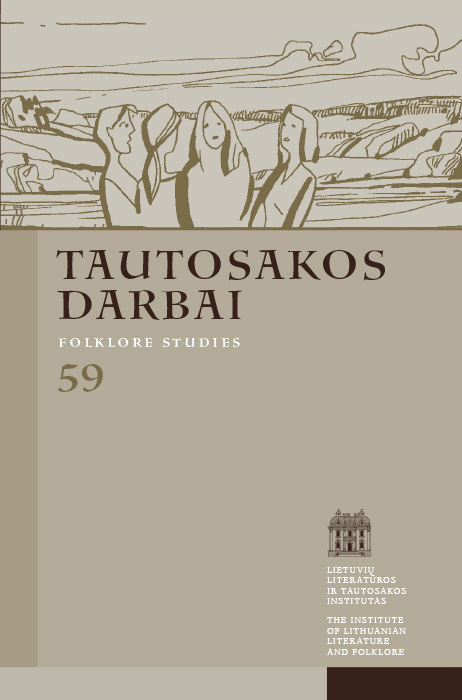Sesers ir brolio atpažinimo motyvas albanų liaudies baladėje: reikšmė ir kontekstas nacionalinėje kultūroje
Santrauka
Sesers ir brolio tarpusavio atpažinimo motyvas, kai dėl ankstesnio nepažinojimo kyla kraujomaišos pavojus, yra labai senas ir pasitaikantis daugelyje liaudies baladžių, paplitusių Balkanuose ir visoje Europoje. Šios baladės priklauso šeimos baladžių ciklui ir albanų folklore taip pat užima reikšmingą vietą: jos žinomos kone visose albanų gyvenamose Balkanų
srityse. Nustatyti trys pagrindiniai variantai, kurie iš esmės skiriasi pagal istorines, socialines ir religines aplinkybes, atspindinčias geografinių sričių, kuriose šios baladės buvo užrašytos, ypatumus. Tai šiaurės ir pietų variantai, taip pat variantai, užrašyti iš Italijoje gyvenančių arberešų. Skirtingi šių kūrinių bruožai atitinka savitus kultūrinius klodus ir laikotarpius, o tai gelbsti nagrinėjant šio tipo balades.
Kitų Europos tautų, taip pat ir Balkanų, kultūrose šis tipas žinomas kaip baladė apie kraujomaišą, nes esama variantų, kur vaizduojamas fizinis brolio ir sesers suartėjimas. Albanų folklore tokių variantų nėra, tad ši baladė identifikuojama ne pagal tai. Šio reiškinio pagrindas, kaip pabrėžiama ir straipsnyje, veikiausiai buvo gentinė visuomenės sandara ir lytinių santykių tarp tos pačios genties narių uždraudimas, nulėmęs ir griežtą egzogamijos taikymą – šiuos principus albanų visuomenė privalomai įteisino labai ankstyvame savo raidos tarpsnyje. Tai turėjo sakralizuoti brolio ir sesers santykius, įskaitant jų vieno kitam aukojimąsi; pasirodo, albanų visuomenėje šis reiškinys yra išlikęs iki pat šių dienų. Baladžių tyrimas atsižvelgiant į nacionalinės kultūros kontekstą leidžia geriau suvokti jų prasmę.
